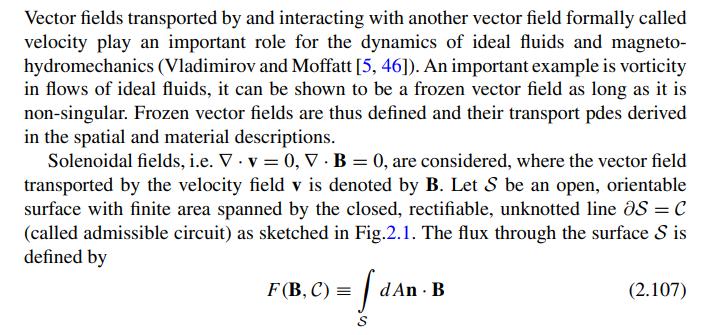Consider a materially invariant admissible circuit (mathcal{C}), as defined in Sect. 2.6.3, embedded in a flow field
Question:
Consider a materially invariant admissible circuit \(\mathcal{C}\), as defined in Sect. 2.6.3, embedded in a flow field \(\mathcal{D}\). The incompressible fluid is in turbulent motion governed by the Navier-Stokes pdes. Assume that appropriate reference values exist and the Reynolds number \(R e \gg 1\) is well defined.
22.1.1 establish the time rate of change of circulation \(\Gamma\) defined in the material description by
\[ \begin{equation*} \Gamma(\mathcal{C}, \tau)=\int_{\mathcal{C}(\tau)} \mathbf{V}(\tau, \mathbf{X}(p)) \cdot d \boldsymbol{\Phi}(\tau, \mathbf{X}(p)) \tag{22.62} \end{equation*} \]
where the circuit \(\mathcal{C}\) at the reference time is specified by \(\mathbf{X}(p)\) with \(0 \leq p \leq 1\) being Lagrangean line parameter (Lagrangean line parameters are materially invariant), \(\boldsymbol{\Phi}(\tau, \mathbf{X})\) denotes the position of a material point at time \(\tau\) that was at \(\mathbf{X}\) at the reference time. Velocity in the material description is by definition \(\mathbf{V}=\frac{\partial \Phi}{\partial \tau}\).
22.1.2: Transform the result of (22.1.1) to the spatial description.
22.1.3: Compute the circulation using the Navier-Stokes pdes for \(0 \ll R e
22.1.4: Evaluate the limit \(\operatorname{Re} \rightarrow \infty\) under following assumptions:
(a) The vorticity field remains smooth \(! \in C_{\mathcal{D}}^{1}\).
(b) The vorticity field becomes Hölder continuous with exponent \(\alpha \leq \frac{1}{3}\).
Sect. 2.6.3

Step by Step Answer:

Navier Stokes Turbulence Theory And Analysis
ISBN: 9783030318697
1st Edition
Authors: Wolfgang Kollmann





